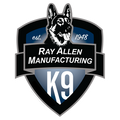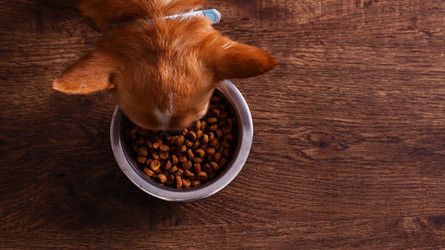The Importance of Pet Food Digestibility & Palatability
Jun 29th 2016

by Jill Cline, PHD
Digestibility determines how much nutrition a food provides in a given volume, while palatability affects how appealing a food is to the dog. Both of these characteristics are important criteria when selecting the best food for your dog.
What Are Digestibility & Bioavailability and How Are They Measured?
A food’s digestibility is the collective proportion of all nutrients in a food that is available to the dog for absorption from the intestine into the bloodstream. Nutrient bioavailability is the proportion of the absorbed nutrients that are carried to target tissues and are available for use by the body. Because a highly digestible food provides a higher proportion of absorbed nutrients like vitamins than a less digestible food, digestibility provides one measure of a food’s nutritional value and quality. In general, as the quality of ingredients in the food increases so will the food’s digestibility and nutrient bioavailability.
Pet food companies measure the digestibility of their products using several tests which are a combination of laboratory tests and feeding trials. In the case of feeding trials, the food is fed to a group of dogs for a selected period of time and the level of undigested matter excreted in the feces is measured and used to calculate nutrient digestibility. Although all reputable manufacturers conduct digestibility tests on their foods, the Association of American Feed Control Officials (AFFCO) has not yet established a standard protocol for digestibility studies.
Commercial foods vary significantly in digestibility and ingredient quality so it can be difficult for pet owners to differentiate between super premium, premium and economy products. For example, the labels of two pet foods may have the same ingredient panels and guaranteed analysis, but when fed may have substantially different digestibilities.
What Factors Affect Pet Food Digestibility?
A number of pet food characteristics influence nutrient digestibility. These include:
FORMULA:
The food’s formula refers to the type and quantity of different ingredients that are included in the product. Because pet food ingredients vary significantly in digestibility, the overall product formula is influenced by the digestibility and nutrient bioavailability of its various ingredients.
INGREDIENT QUALITY:
Overall pet food digestibility is increased by the inclusion of high quality ingredients and decreased when poor quality ingredients are included. For example, a pet food’s digestibility is decreased by the presence of poor quality protein, high amounts of ash, certain types of dietary fiber and phytate (a component of plant ingredients that decreases the availability of certain essential minerals in the diet).
PROCESSING:
Proper processing techniques, cooking temperatures and storage procedures support optimal nutrient digestibility and bioavailability. Conversely, digestibility and nutrient bioavailability can be significantly reduced by improper processing or excessive heat treatment. For example, excessive heat damages protein resulting in decreased digestibility of the protein and reduced bioavailability of certain amino acids. This means that a smaller proportion of the protein is digested and absorbed.
What is Palatability and How is it Measured?
Palatability refers to perceptions of a food’s taste, smell and texture. It is an important food characteristic because dogs must be willing to eat adequate amounts of the food to meet their calorie and nutrient needs. Unpalatable foods will be rejected, regardless of the quality of their ingredients or balance of essential nutrients.
Dogs make decisions about the palatability of a food based on three sensory characteristics: aroma, texture and the macronutrient profile of the food. Dogs have a hypersensitive nose and aroma plays an important role in food selection. Although dogs find the aroma of the food enticing, it is not always the same as the ones humans find palatable. In addition, the texture, size and shape of food pieces (kibble) are important; scientists who study palatability refer to this as “mouth feel.” The macronutrient profile refers to the optimal blend of protein, fat and carbohydrates for a dog. The fusion of these macronutrients affects the post-ingestion feeling that a dog has after consuming a meal and some dogs may be sensitive to this feeling. Finally, in addition to the dogs sensory preferences, scientists who study palatability also consider the dog’s environment and age, as well as, the owner’s reactions to different types and flavors of food.
Similar to digestibility, there are a number of ways that pet food companies evaluate a food’s palatability. Tests that measure the dog’s preference when initially presented with a new food provide information about the immediate appeal of the food’s smell, appearance and texture. Long-term interest is measured using food preference studies. Each dog is offered a choice of two diets that are presented in identical bowls to the left and right. Surplus food is offered in each bowl so it is not necessary for the dog to eat both foods in order to meet his energy needs and the positions of the bowls are switched daily to account for dogs with right or left side preferences. The amount of food that is consumed at each meal is measured over a period of several days. These tests provide information about a food’s acceptability to dogs over time and its relative palatability when compared with other foods. Finally, the ultimate test of palatability involves presenting the food to pets in homes where both the pet’s and the owner’s perceptions of the food are considered.
Here are a few helpful tips for selecting a food that is both highly digestable and desirable (palatable) for your dog:
- A product that is highly digestible will produce normal stool volumes and well-formed and firm feces. In addition, the fecal matter will not contain mucous, blood or any recognizable components of the food.
- Highly digestible foods result in relatively low defecation frequencies &bowel movements that are regular and consistent. Foods that are not highly digestible may cause excessive flatulence, loose stools or diarrhea.
- Your dog should readily consume and enjoy the food in a quantity that promotes normal growth rate and optimal body weight. There should be no need to entice your dog to eat the food by adding treats, table scraps or other human foods. An excessive quantity of food should not be needed to maintain your dog’s normal body condition.
- Dogs are not instinctively “picky.” When the right combination of aroma, texture and macronutrient profile is found in a particular food, your dog will be satisfied with it for his current lifestage.
Dr. Jill Cline has spent nearly 20 years in the pet food industry. Her career includes pet food formula development, research methodology design and communications. She has a keen interest in sporting and working dog nutrition and the link between nutrition and cognitive function as well as expertise in skin and coat health.





